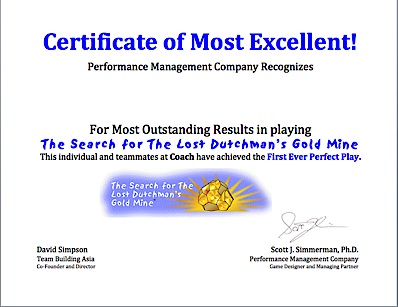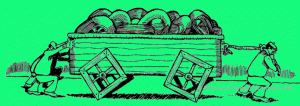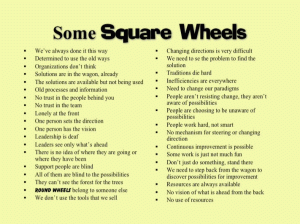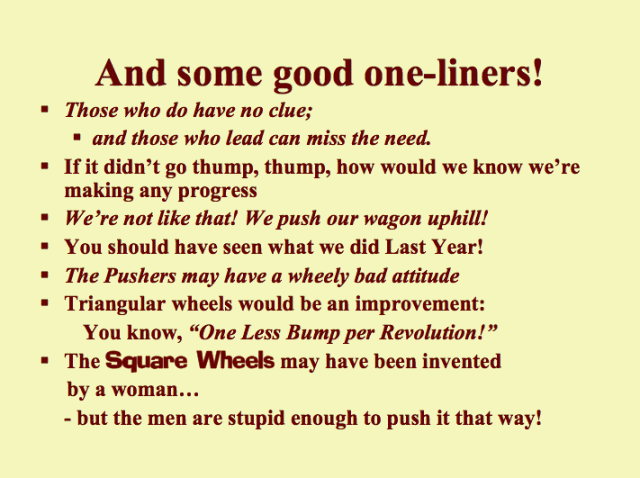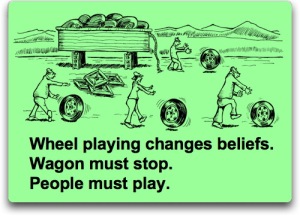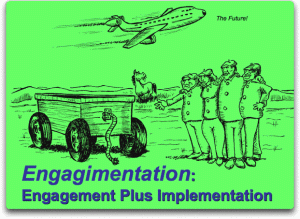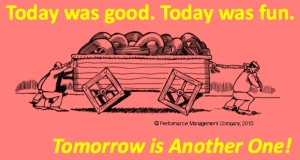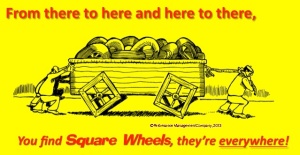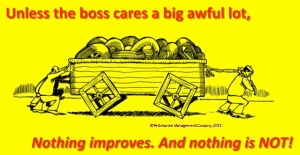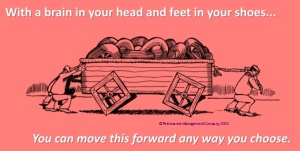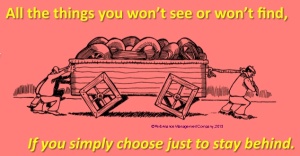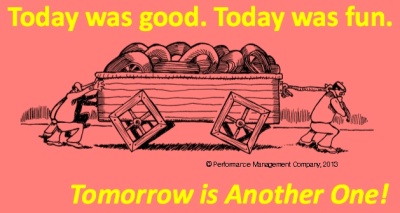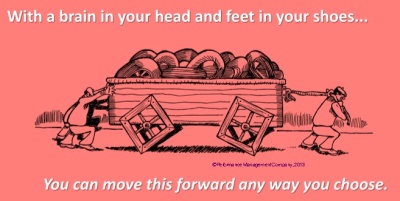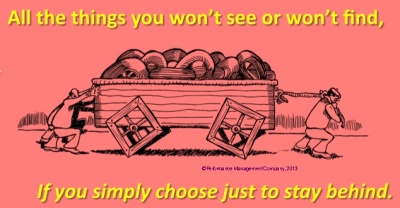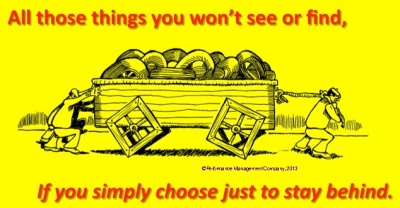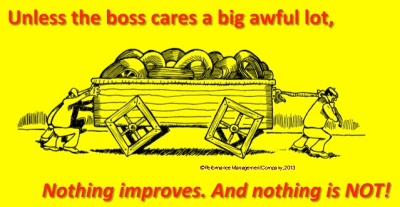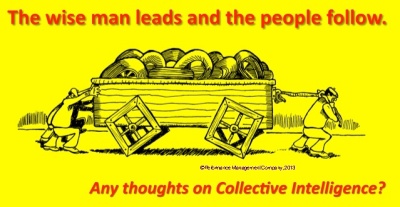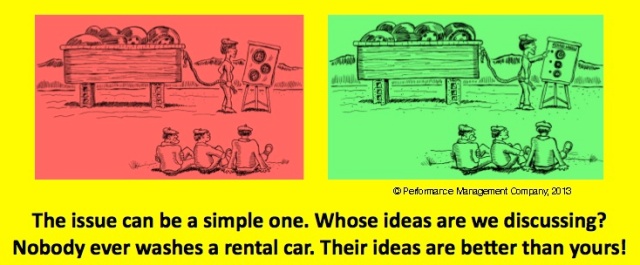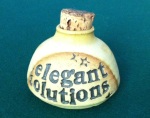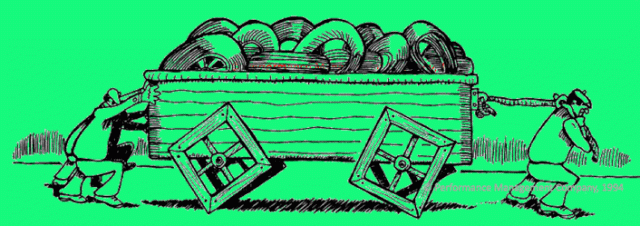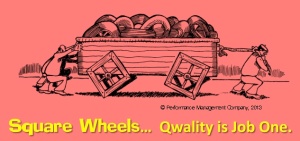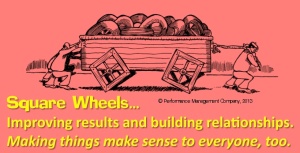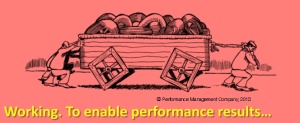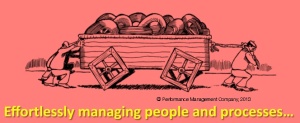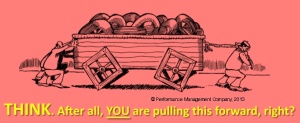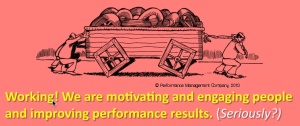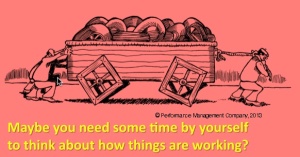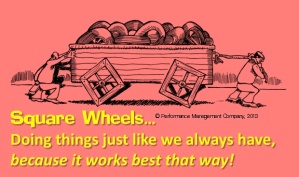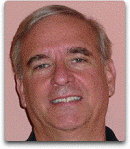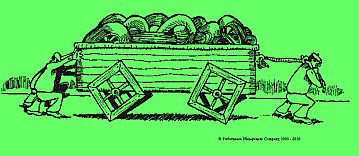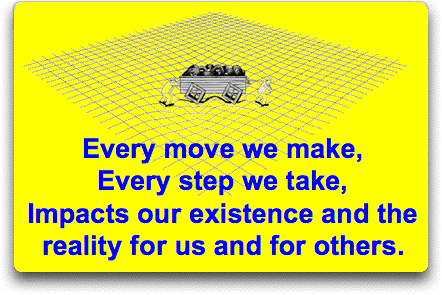This is the second of two articles that hammer on the issues around supervision and how they affect engagement and performance. Spending billions for decades, why can’t we actually make improvements in organizations?
It must be about organizational cultures and about our models of what good leadership must look like, or at least how most people view the role of a Manager. It must be about how organizational measurements and competition between departments drive competitive behavior so that we do not find much collaboration. It must be competition driving away engagement, and extrinsic reward systems not being meaningful to everyone.
Something must be wrong and it makes sense that we need to do something differently. My thinking says it is the interface between worker and supervisor that needs to be fixed and that so many things that interfere with that interface need to be changed. The issue is one of communications.

I do not want to put an anchor point here to “leadership” because that means so many different things to so many people. And I do not think that the issue is “Supervisory Skills Training” since that says that people must be trained before they can exhibit behavior to improve that connection.
Over the past year, Gallup interviewed nearly 150,000 Americans in all states and industries and discovered that a stunning number are miserable in their jobs. More specifically, only 30% of the nation’s working population today admits to being fully engaged at work and 52% admit to being disengaged in their jobs with another 18% being actively disengaged.
Why are 7 in 10 workers discouraged, and more importantly,
why does no one seem to actually do much to improve this reality?
To a degree, I blame company cultures. They are not working yet they are totally resistant to change. The nail that sticks up gets hammered down, so doing things differently is very often punished. And if we keep doing things the same way, why should we expect anything to change? But let’s do another million-dollar survey to be sure of our thinking…
Numerous studies have shown that engaged workers display greater initiative, approach work more passionately and creatively–essentially do all they can for their organizations. Gallup’s report specifically states that engagement drives greater productivity, lower turnover, and a better quality of work. Organizations in the top 10% of engagement outperform their peers by 147% in earnings per share and have 90% better growth trends than their competition.
Gallup, a survey organization, suggests that you measure engagement everywhere. My thought is why? What good are measurements when you won’t do anything to change in a meaningful way? Research shows that we’ve been doing a LOT of research and not making any impact, so why do more research? People are un-engaged so why not do something to engage them – that is most assuredly NOT another survey!
Gallup assumes that people do not know that people are not engaged. I suggest this: Walk into a workplace and stand there. You can tell the level of engagement just by looking and listening.
Companies have been doing surveys on engagement for 20 years and results will show that things are getting worse, if anything. Things are not getting better even though many organizations report they are “working on engaging people”: Employee engagement has declined from 24% to 13% in the past two years (Mercer’s 2012 Attraction and Retention Survey). If your spouse was “working on something” for 20 years, would you not also be frustrated and non-trusting?
Why not spend the money in different ways and get the managers away from looking at survey data to actually doing something differently. Improving engagement is just that – getting people to focus on improving things in their workplace and feeling more of a sense of ownership involvement.

There are a lot of bosses who foster un-engagement. The classic quote is Samuel Goldwyn, the G in MGM, who said,
“When I want your opinion, I’ll give it to you.”
He also said, “If you don’t disagree with me, how will I know I’m right?”
Yeah, he would have be an engaging boss, for sure. NOT. Then again, boss spelled backwards is self-explanatory, right?
A Parade magazine survey in 2012 found that 35% of U.S. workers said they’d willingly forgo a substantial pay raise in exchange for seeing their direct supervisor fired. A Florida State University survey in 1997 found 40% think they work for bad bosses. The irony is that bad bosses are often insecure, which probably makes their bad behavior even more prevalent…
Okay, enough on the negative — what can we do differently?
Gallup sees solutions in more measurement and more employee development spending. My take is that while improving skills is a good thing, it is future-focused and not immediate. More immediate things will result in more immediate improvement, and tons of surveys focus on listening, team building, making workplace process improvements and even dealing with poor performers more effectively (coaching is often a good and effective solution).
I am reminded of this old quote:
We judge ourselves by our intentions;
We judge others by their behavior.
What we need to do is build teams and align people toward roadblock removal and process improvement. We can provide more effective performance feedback, build more workplace collaboration and add coaching and mentoring on a one-on-one and a team-based perspective.
It’s hard to care for customers
if you don’t feel the boss cares for you.
Long-term, we can look to improve hiring practices, provide more skills training and support for workers, increase compensation and similar kinds of things. In the short term, we can focus on doing things differently and doing the things that will dis-un-engage people and performance.
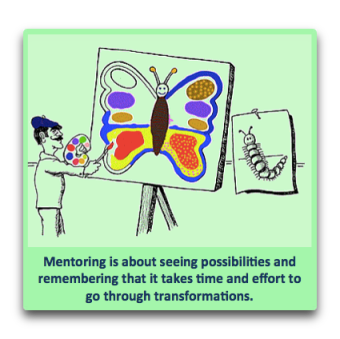
Good articles are plentiful out there and there are a lot of good stats, but I disagree with many of the conclusions. Many articles talk about better hiring as the solution — yeah, great idea, but it will do nothing NOW and that new “great hire” will tend to be pressed to regress to the average within 6 months (Sirota Research). Peer pressure toward “normative behavior” is really powerful and there are tons of studies that show that.
Clear expectations is another oft-seen solution. And that should probably be part of a solution but good performance feedback systems are not so common. (see my article on improving feedback here)
Give people the right tools to perform as a solution? Sure. But if you put a gun to their head, could they do a better job right now? Sure! (Bob Mager’s work on performance is useful – another blog post on managing performance is here).
Being generous with praise and recognition. Also a good idea. But 80% of minimum wage people work for large (profitable) multinationals. Praise and recognition are good, once people feel that they have some minimal sustainable level of overall compensation. It’s little things like HEALTH CARE that make a difference. When more than half of bankruptcies are for medical problems and happen to people who HAVE healthcare insurance (around 75% of them HAD coverage), we have a really tough situation for people to feel comfortable about…
Look at things this way:
Could ONE supervisor make a difference for ONE employee? Would that make a difference?
Could that one supervisor make a difference to another employee on a different day? Would those differences begin to add up?
Could ONE manager make a difference for ONE supervisor? Would that make a difference?
Could that manager make a difference for another supervisor on a different day? Would those differences begin to add up?
The reality, in my view, is that people are un-engaged and working in un-engaging workplaces managed by un-engaged supervisors working for un-engaged managers (it goes higher than that…). (You can read more about the general state of workplace motivation here)
One solution is to focus on DIS-un-engagement, helping one person and one group at a time. This involves the removal of real and perceived roadblocks, generating a feeling among people that someone is listening and actually cares about how things are going, and that people can make better CHOICES among considered alternatives, things such as “best practices” and the like.
We seem to have solved some of the issues around the Higgs Boson sub-atomic particle by using the Large Haldron Collider and smashing particles together. The Higgs Boson was initially theorized in 1964 and confirmed in March of this year, confirming the Higgs Field and all this being pivotal to the Standard Model and other theories of particle physics. Since we could do that, can’t we somehow figure out what is de-motivating people in their workplaces and make some considered changes in how we do things?
Can we finally understand that performance appraisals are detested for some pretty good reasons by every worker and manager (well I guess the top 10% like them) and that extrinsic reward systems just do not work (except for that top 10% who get them) and that most people are un-involved and dis-engaged?
I mean, really?
We can put a satellite into the sky that goes 500,000,000 miles to circle a small moon around Jupiter. Heck, we know that when Earth and Jupiter are at their closest to each other they are 628,743,036 million km apart and at their most distant, they are 928,081,020 km apart.
We can’t figure out how to motivate ONE worker in one workplace? Seriously?
This model, by the way, is wrong. It is NOT how to motivate people. I was kidding when I had it produced!
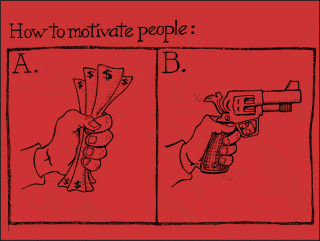
We CAN motivate people by simply involving and engaging them in their workplace. Sorry, Gallup, but we do not need to spend any more hundreds of thousands of dollars on another survey that asks people if they are involved because they AREN’T. Ask their supervisors what they could do differently.
We might simply ask people what things do not work smoothly, and get them involved and engaged in solving workplace performance issues.
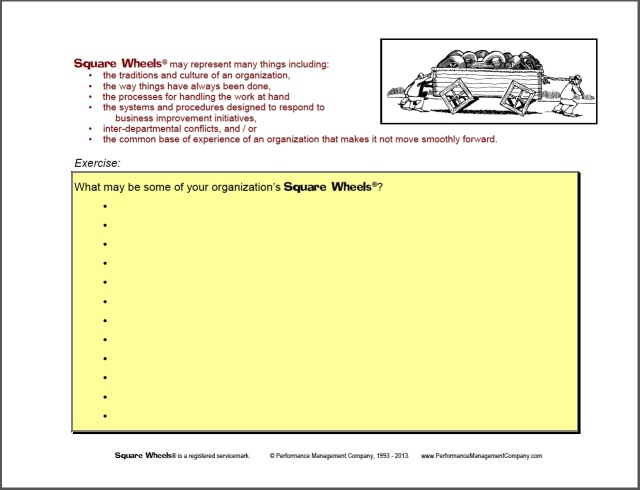
This stuff ain’t particle physics or rocket science. It is about doing some simple and straightforward involvement and listening. (And then implementing!)
You can see Part One of this two-part series by clicking here.
For the FUN of It!
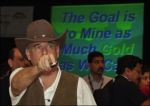
Dr. Scott Simmerman is a designer of team building games and organization improvement tools. Managing Partner of Performance Management Company since 1984, he is an experienced presenter and consultant.
Connect with Scott on Google+ – you can reach Scott at scott@squarewheels.com
Follow Scott’s posts on Pinterest: http://pinterest.com/scottsimmerman/
<a rel=”author” href=”https://plus.google.com/u/0/114758253812293832123″ a>
